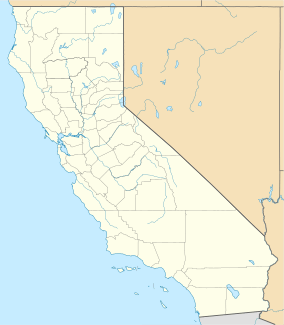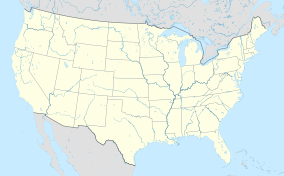Kendall-Frost Mission Bay Marsh Reserve facts for kids
Quick facts for kids Kendall-Frost Mission Bay Marsh Reserve |
|
|---|---|
| Location | San Diego, California |
| Area | 20 acres (0.031 sq mi) |
| Governing body | University of California, San Diego |
| Website | http://nrs.ucsd.edu/reserves/kendall.html |
The Kendall-Frost Mission Bay Marsh Reserve is a special natural area in San Diego, California. It's a 20-acre (about 8-hectare) protected space on the northern shore of Mission Bay. This reserve is part of the University of California Natural Reserve System. UC San Diego manages this land. It is used for teaching students and for scientific research.
This reserve helps protect some of the last remaining coastal salt marsh habitats in Mission Bay. The city of San Diego also has a nearby area called the Northern Wildlife Preserve. Together, these two areas create a larger wetland habitat of about 40 acres (16 hectares).
History of the Reserve
In 1952, two important parts of the marsh were given to the University of California. This gift came from Lena Kendall and the A. H. Frost estate. In 1965, this site became one of the first seven reserves in a new system. This system is now known as the University of California Natural Reserve System.
Ecology of the Marsh
The Kendall-Frost Reserve is home to many different habitats. These include high marsh areas, mudflats, and tidal channels. There are also salt flats and areas underwater near the shore.
Underwater Habitats
The underwater parts of the reserve have special eelgrass beds. These beds are like underwater meadows. They provide a safe home for young fish and small creatures without backbones, called invertebrates.
Mudflats and Algae
When the tide is low, mudflats are uncovered. These muddy areas are covered with Algae and thin layers of bacteria. This "bacterial mat" is an important food source. Many shorebirds and other animals come to eat here.
Salt Marsh Plants
The salt marsh has different zones based on how wet they are.
High Marsh Plants
The lower parts of the marsh are often wet. Here you can find California cordgrass (Spartina foliosa) and perennial pickleweed (Salicornia pacifica). These plants are very good at living in salty water.
Midmarsh Plants
A bit higher up, in the midmarsh zone, you'll find other salt-tolerant plants. These include sea lavender (Limonium californicum) and saltmarsh daisy (Jaumea carnosa).
Drier High Marsh Plants
The driest parts of the marsh are called the high marsh. Plants like rambling sea-blite (Suaeda californica) and saltgrass (Distichlis spicata) grow well here.
Animals of the Reserve
The Kendall-Frost Reserve is one of the few wetlands in the San Diego area. This makes it a very popular spot for many kinds of birds.
Bird Species
Many shorebirds visit the reserve. One example is the long-billed curlew (Numenius americanus). The reserve is also home to one of California's rarest birds. This is the light-footed clapper rail (Rallus longirostris levipes).
Protecting the Clapper Rail
To help the clapper rail, special nesting platforms were built in 1987. These platforms keep the birds' eggs and chicks safe. They stay dry during high tides and are protected from land predators. These predators include wild cats and raccoons.
Fish and Other Water Animals
The tidal channels in the marsh are home to native fish. The California killifish (Fundulus parvipinnis) lives in very salty pools. Longjaw mudsuckers (Gillichthys mirabilis) also live here. Arrow gobies (Clevelandia ios) often live in burrows. These burrows are sometimes made by ghost shrimp (Neotrypaea californiensis).
Using the Reserve for Learning and Research
Students and scientists use the marsh to study its unique environment. They learn about salt marsh ecology. They also practice how to do field research. This means studying nature outside of a lab.
Restoration Efforts
People also work to restore the marsh. For example, there was a project to remove invasive mangrove plants. These plants were not native to the marsh. Removing them helps the natural habitat work better. It also improves conditions for the native plants and animals that belong there.



